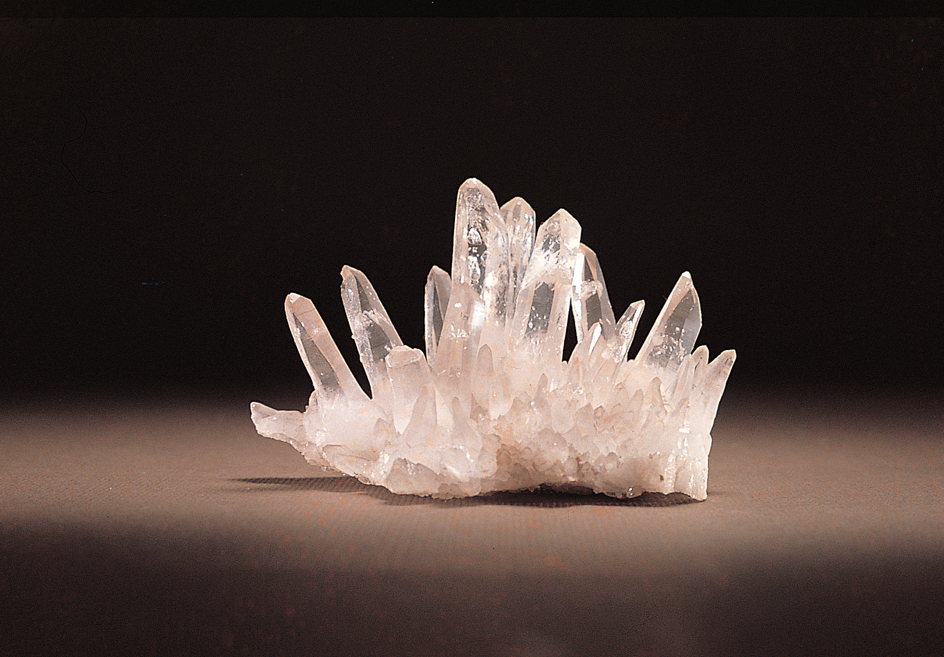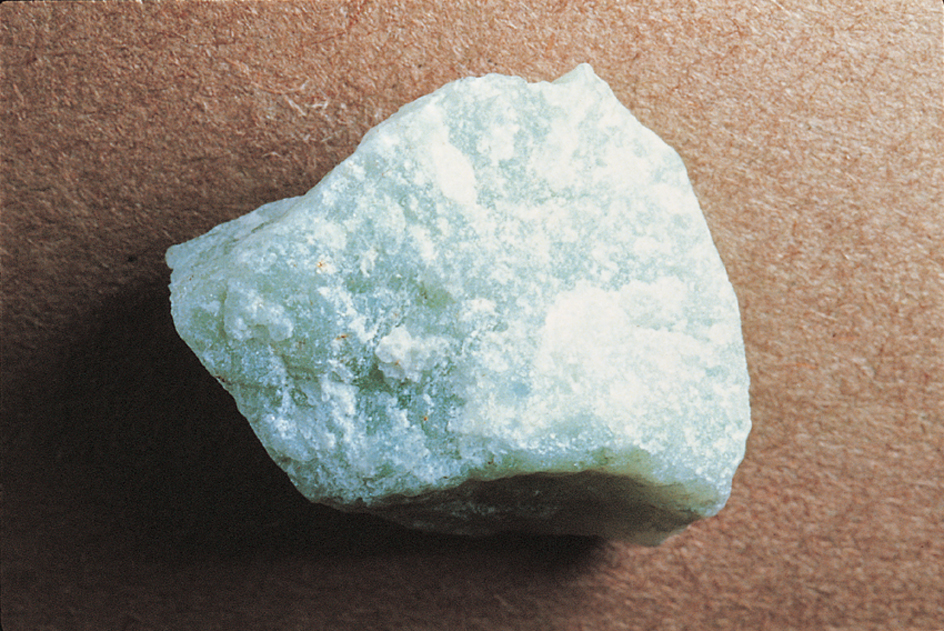Quartz << kwawrts >> is a common mineral that occurs in many types of rocks. Quartz is a form of silica, a chemical compound of silicon and oxygen. Its chemical formula is SiO2. Quartz is the most abundant mineral in the continental crust, the part of Earth’s rocky outer layer that lies beneath the continents. It makes up about 12 percent of the rock found there. Quartz is an extremely stable mineral. It is abundant in most beach sands because its grains do not dissolve easily in water. Quartz crystals often line rock cavities called geodes.

Quartz appears in many kinds of rock. Quartz crystals form as granite solidifies from magma (molten rock). Quartz also occurs in metamorphic rocks, rocks whose mineral composition has been changed by heat and pressure. Underground waters sometimes deposit dissolved silica as quartz. This quartz can cement grains of sand to form a rock called sandstone. Heat and pressure can transform sandstone that consists almost entirely of quartz into a hard rock called quartzite. White veins of quartz often line or fill fractures in rock.

Quartz that forms in underground cavities sometimes develops into clumps of large six-sided crystals with smooth faces. The most common varieties appear white or colorless, but traces of metallic elements or other impurities can result in a wide variety of colors. Quartz crystals have a vitreous (glassy) or greasy luster (shine). They break along smoothly curving surfaces. Quartz, one of the hardest minerals, defines a 7 on the Mohs hardness scale, a ranking of mineral hardness used by geologists. Quartz scratches glass easily and cannot be scratched by a knife blade.
Types.
Geologists divide quartz into many different varieties based on the size and color of its crystals. They usually separate these varieties into two major groups: (1) coarse crystalline and (2) cryptocrystalline.
Coarse crystalline varieties of quartz have crystals that can be seen with the unaided eye. Geologists have found crystals of the colorless variety, called rock crystal quartz, that measure up to 3 feet (1 meter) long. Colored varieties include the gems amethyst, which is purple, and citrine, which is yellowish. Rose quartz is pinkish, milky quartz is white, and smoky quartz is gray.
Cryptocrystalline quartz varieties have crystal grains that can be seen only under a microscope. Chalcedony, a variety with fibrous (fiberlike) crystals, can replace wood fibers to form petrified wood. Chert, an abundant form of quartz, breaks into angular pieces or flakes with smooth surfaces. Flint, a dark variety of chert, gives off sparks when struck. Onyx is a black quartz with parallel bands of white, yellow, or gray. Jasper is a reddish or orangish quartz often found in the presence of iron or manganese. A variety called agate has colored bands.
Uses.
Quartz is a major component of the sands and gravels used to make cement, concrete, and sandpaper. Manufacturers melt unusually pure quartz sands into glass for windows and containers. Large, well-formed quartz crystals serve as lenses in certain types of microscopes and telescopes.
When a quartz crystal is squeezed, it can develop a slight positive electric charge on one side and a slight negative electric charge on the opposite side. This effect, called the piezoelectric effect, generates a voltage across the crystal. When a voltage is applied to such a crystal, the reverse effect occurs and the crystal expands and contracts in certain directions. Quartz clocks and watches use piezoelectric quartz crystals to measure time. A small alternating voltage causes the quartz crystal to vibrate at a certain frequency. The clock or watch counts the vibrations to record the passing of seconds, minutes, and hours. Piezoelectric quartz crystals have converted vibrations into electrical signals in devices such as microphones and transformed electrical signals into vibrations in devices such as radios and radar.
Manufacturers produce large, nearly perfect crystals of quartz in special furnaces. These crystals are used in electrical and optical devices.
